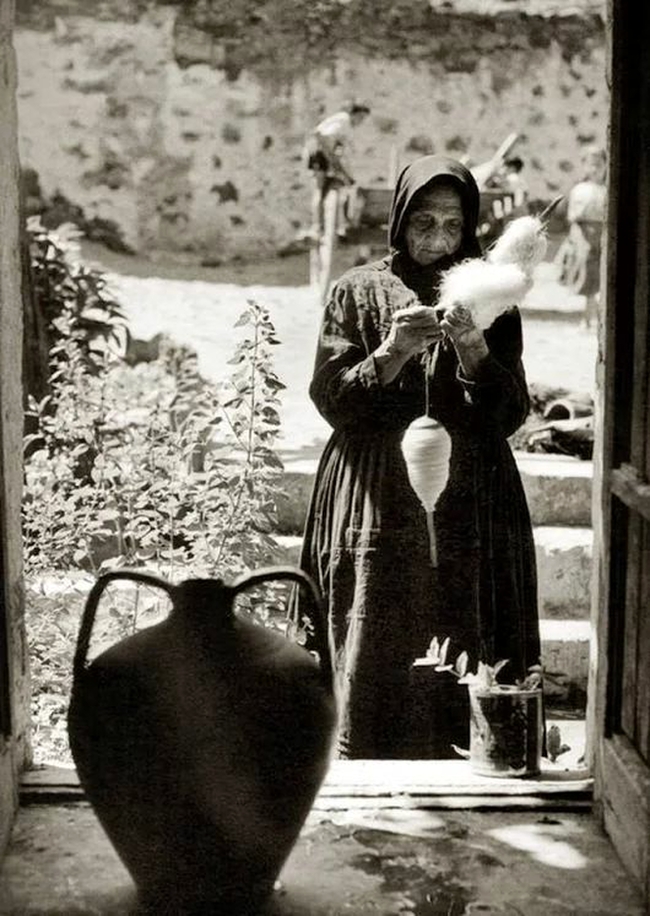 The
figure in our first picture instills us with sentiments of profound
respect. It portrays an elderly mother who appears to have spent her
life in the dignified and pious environment of the home. Her dedication
to her family, her temperance and her freshness of soul enable her to
enjoy the chaste joys of domestic life while doing its chores neither
sluggishly nor slothfully. In short, everything about this unassuming
spinner from Sardinia inspires honest respect and sincere admiration.
The
figure in our first picture instills us with sentiments of profound
respect. It portrays an elderly mother who appears to have spent her
life in the dignified and pious environment of the home. Her dedication
to her family, her temperance and her freshness of soul enable her to
enjoy the chaste joys of domestic life while doing its chores neither
sluggishly nor slothfully. In short, everything about this unassuming
spinner from Sardinia inspires honest respect and sincere admiration.
Moreover,
closer scrutiny reveals that she is accustomed to the respect of those
around her; and that, despite her maternal sweetness, she is
sufficiently conscious of her own dignity to prevail over anyone who is
lacking in respect to her.
Nevertheless, she is content with her lot. She wants neither to be, nor
appear to be cultured, noble or rich. Although she accepts the social
hierarchy, she is conscious of possessing the essential dignity of a
human being and of a child of God redeemed by Our Lord Jesus Christ. She
is, therefore, wisely content with the state of life into which she was
born and placed by Providence.
* * *
T
he
painting below by David, in the Museum of Fine Arts in Lyons, shows a “maraîchère,”
a vegetable farmer from the wetlands of France. She is a typical example
of those termagants who took part in the French Revolution.
While the
spinner irradiates warmth, dignity, temperance and peace, this virago
excites hatred, revolt, excess and agitation. Her familiar environment
is the street, not the home. Her gaze crackles from inner flames, her
bitter lips have just uttered one insult, to be followed by another, and
those arms seem made not to cradle children but rather to brandish and
old knife or chair leg in riots.
* * *
By
creating different ambiences, these two women perpetuate opposite
customs and represent two irreconcilable civilizations ─ to the degree
that the latter can even be called a civilization − Christian
civilization and revolutionary neo-pagan civilization.
* * *
The
human creature is the most specific object of "Ambiances, Customs,
Civilizations." However, it is sometimes more difficult to interpret the
meaning of a countenance than that of a piece of furniture or building.